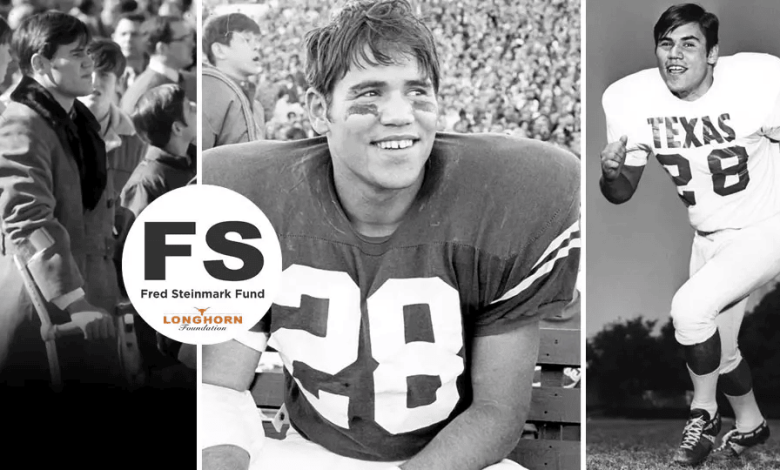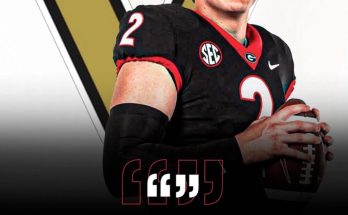Historical Date in Texas: The Birth of Freddie Steinmark, A Future Longhorn Role Model
In the heart of Texas, a legacy of athletic excellence, resilience, and profound impact on both sports and the local community was set into motion on February 18, 1948, when Freddie Steinmark was born. Known for his indomitable spirit, courage, and leadership, Steinmark would go on to become a symbol of hope and perseverance, not only for the University of Texas Longhorns but also for generations of athletes and individuals battling adversity.
Freddie Steinmark’s story began in the small town of Denver, Colorado, where he was born to an ordinary family. His journey to becoming a Longhorn hero would span far beyond the realm of sports and into the hearts of millions of people who admired his strength and integrity. His story encapsulates the true essence of a role model—one who inspires, uplifts, and leaves an enduring legacy.
Early Years: A Humble Start
Growing up in Denver, Freddie Steinmark displayed an early love for sports. Despite his small stature—he stood at only 5 feet 9 inches—he possessed an undeniable passion and determination that set him apart. His athletic talent was evident, particularly in football, where he excelled as a defensive back. Yet, his physical size and appearance often led others to overlook his potential, a challenge that would serve as a backdrop for his entire athletic career.
Steinmark’s high school years were marked by his relentless drive to prove himself. At Wheat Ridge High School, he was a standout on the football field, demonstrating his exceptional agility, speed, and game intelligence. However, despite his skills, college recruiters were initially hesitant to offer him a scholarship. His size, while not an impediment to his performance, was a common limitation that often left coaches skeptical. But that would soon change, as a pivotal figure in his life saw beyond the surface and recognized his true potential.
The Decision to Join the Longhorns
Freddie’s life would take a significant turn when he received an offer from the University of Texas at Austin to play football for the Longhorns. Head coach Darrell Royal, who had built a reputation for his keen eye for talent, saw something special in Steinmark. He wasn’t just impressed by Freddie’s on-field ability but by his tenacity, work ethic, and attitude. The Longhorns had been searching for a player who could fill the defensive back position with intelligence and skill, and Steinmark was more than capable.
Despite the doubts from some who questioned his physical ability to thrive at the collegiate level, Freddie accepted the offer and arrived in Austin in the fall of 1966. His arrival was somewhat quiet, but it didn’t take long for him to make his mark on the Longhorn football team.
A Star on the Field
Steinmark’s time at the University of Texas would be marked by outstanding athletic achievements. He became known for his discipline, dedication, and focus on the game. His hard-hitting style of play, combined with his uncanny ability to read the opposing team’s offense, made him a critical player on defense.
In 1968, during his junior year, Steinmark’s breakthrough moment arrived. It was a season that would define his legacy. The Texas Longhorns went on an extraordinary run, culminating in a perfect record that earned them a national championship victory. Throughout the season, Steinmark played a crucial role in the Longhorns’ defense, helping the team navigate through some of the most challenging games in college football. His leadership on and off the field, along with his unwavering commitment to his team, made him a fan favorite.
However, the defining moment in Steinmark’s athletic career wasn’t a single play or game but rather his personal story of triumph over adversity. In a time when football was a brutal and demanding sport, Freddie’s approach was a blend of mental toughness, physical skill, and resilience. Despite the countless obstacles he faced, including being overlooked by many due to his physical size, Steinmark proved that heart, determination, and hard work were what truly mattered.
The Tragic Diagnosis: A Test of Character
In 1969, just when Freddie was at the height of his college football career, tragedy struck. During a routine medical examination, it was discovered that he had a cancerous tumor in his left leg. Doctors informed him that the only way to save his life was to amputate the leg above the knee. For most athletes, such a diagnosis would have ended their careers and shattered their dreams. But for Freddie, it was only another challenge to overcome.
Incredibly, Steinmark chose to continue his fight with an unflinching resolve. He underwent the amputation and immediately began a grueling process of rehabilitation. Despite the pain and difficulty, he was determined to walk again—and more than that, to return to the football field.
During his recovery, Steinmark’s teammates and coaches rallied around him, offering unwavering support. His determination was contagious, and it became clear to everyone that Freddie was not just fighting for his own future but for the legacy of the Longhorns.
The 1969 National Championship Game
Freddie Steinmark’s courage would come full circle during the 1969 football season. After months of recovery, he returned to the field for the Longhorns’ biggest game of the year: the 1969 Cotton Bowl against the heavily favored Arkansas Razorbacks. The game itself was a high-stakes battle, with Texas needing a victory to secure the national championship.
Steinmark, despite his recovery, was called to play, and his presence on the field symbolized much more than just an athlete returning to his sport—it was a testament to the power of perseverance. Although he had to wear a prosthetic leg for the game, he played with a vigor and resilience that defied all odds. His performance was nothing short of heroic. The Longhorns defeated Arkansas in one of the most famous games in college football history, clinching the national championship. For Freddie, it wasn’t just a victory for Texas; it was a personal triumph—a victory over the disease that had threatened his life and his career.
Unfortunately, Freddie’s health continued to decline after the season. His cancer returned, and despite his best efforts, he passed away in June 1971, just a few months after his championship victory. He was only 23 years old.
Legacy and Inspiration
Freddie Steinmark’s life and career left an indelible mark on the University of Texas and the broader world of college athletics. His story continues to serve as an enduring inspiration for athletes, students, and individuals battling personal hardships. Steinmark embodied the values of courage, determination, and resilience in a way that transcended sports.
The University of Texas honored Steinmark’s legacy by naming the Freddie Steinmark Hill in his memory, a part of the Longhorn football stadium that serves as a reminder of his incredible strength. His story is often cited as one of the most powerful examples of overcoming adversity in the history of college athletics. His legacy continues to live on in the hearts of those who admired him, and the Longhorns, who consider him one of their most cherished role models.
Freddie’s story also played a pivotal role in reshaping how the world views athletes facing illness and injury. His determination to return to the field, even after such a devastating diagnosis, has served as a beacon of hope for many athletes who have faced similar challenges. In many ways, his journey has become a symbol of the ultimate resilience that transcends the game and speaks to the human spirit.
In addition to his athletic feats, Steinmark’s integrity, humility, and dedication to his teammates have made him a role model for anyone looking to overcome adversity, whether on the field or in life. His story teaches us that greatness isn’t measured by the number of games won or records set, but by the strength of character and determination one shows in the face of challenges.
The birth of Freddie Steinmark on February 18, 1948, marked the beginning of a legacy that would inspire generations of athletes, students, and individuals across the world. His courage, heart, and resilience in the face of immense adversity made him not just a legendary figure in Texas but a role model for all who dare to face their struggles head-on.
Freddie Steinmark may no longer be with us, but his spirit lives on in the lives of those he touched. His story continues to be shared as a testament to the power of perseverance and the enduring strength of the human spirit. As we reflect on his remarkable life, we are reminded that even in the most challenging of times, heroes are born—not just from victory, but from the courage to rise above.



